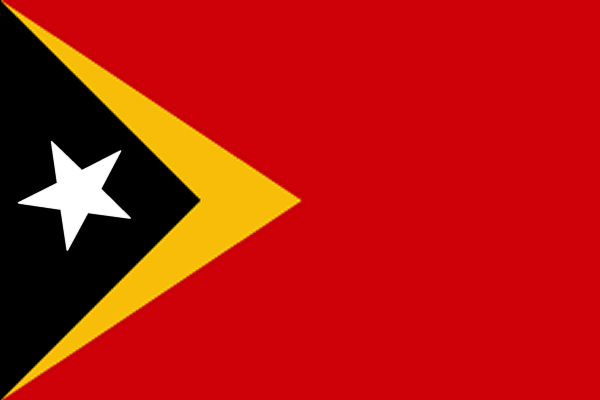The purpose of the meeting is to examine the most suitable ways for developing countries to meet the challenges and opportunities that the globalization of logistics may pose to their national trade and investment policies, in the light of recent trends in international maritime transport and developments in sea, river and inland terminals.
World trade, development and logistics: an industry perspective
C.T. Burke, Senior Advisor, K Line America:
In Los Angeles, an environmental program was set up through the national ports.
Each developing countries need to have a national plan to improve all the dimensions level: employment, social, economy…
Three years ago, American ports discuss about a national security program to bring security in the ports.
Each port need to have an important security since 11/09 (the world have change…).
We need a central organization to answer to the security issue, unfortunately it’s an expensive issue, but it should be the United Nations Organization.
He finished his speech by “when it’s time it’s time” (in relation with security matter).
QUESTION:
- Suriname: How small countries could participate to the globalization in Logistic without important resources?
Not only could the big port manage to consolidate their infrastructures but also the small port if we work together through International Institution.
Port logistics: strategies for containerized trades
T.Morwe, Chief Executive, Durban Port:
There was a growth in container (Vessel call and Average Call Size) during the last seven years.
The main problem in South Africa for the Logistics is the distance. It exist a long distance from ports in South Africa.
In according to The World Bank report on Logistics, on 130 countries, South Africa is place to 24th rank concerning the Middle Income of his ports.
Ports in Developing Countries normally faced the following problem:
- capacity constraints
- skills shortage
- lack of modern technology
- low degrees of trade flows
John Verschelden, Vice President and Head of government and Regulatory Affairs, APM Terminals:
APM have this Head office in The Hague (Netherlands) and have many Regional Offices (31 countries whose China, EU, UE…).
A significant role on World Economy:
- Increasing distance between the areas of production and consumption
- World trade drives the global economy
- Container terminal play a key role in global supply chain
To resume, the idea is to go through reducing the costs to facilitate the global trade.
Market growth (dollars):
- 2000: 236 Millions
- 2006: 442 Millions
- 2011: 673 Millions
And also in regional trade:
- Africa: 9%
- Middle East:6%
- Asia and Oceania: 8%
In some area (for instance in the east of Australia), it exist or emerge bottleneck in container handling capacity.
Challenge for container terminal industry:
- getting capacity on line, when and where required
- long project cycles in developed markets
- increased complexity due to environmental constraints
- capacity landside connection
- lack of suitable deep water sites
- competition for experienced
- Plus backlogs in maintenance of acquired terminals
Plus in developing Countries:
- State of port infrastructures and services
- Privatization processes
- National property
- Quality and capacity of landside connection
- Proximity to urban areas
- Training of labors
- Political instability
- Customs procedures
- Poor safety culture
- Maintaining equipment
- Corruption
QUESTION:
African Union Commission: Only some big ports like Durban are effective. As the African countries will represent the most important business in the future, the UNCTAD help to our ports could profit to public and private participants.
M. Morwe: We knew the weakness and we improving the inter-connection between each ports in South Africa. Moreover, the key challenge is the transformation of the industry of Logistic.
Inland connections to global networks
A.Von Stempel, Director, Freshwater Logistics:
Ocean freight:
- inter-Asia: 44.3 M, TEU* (twenty-foot equivalent units) up 9.7%
- Asia/Europe: 17.8 M, TEU (twenty-foot equivalent units) up 13%
*= Container capacity
TEU growth:
- 2002: 2.96 M
- 2006: 3.1 M
- 2007: 3.7M
Concerning to the capacity of each port, we could see a saturation of some ports, and generally an increase of the volume in relation to the capacity.
Interland Strategy:
Strength of road: speed, flexibility, fixed pricing per unit.
Strength of rail: mass transportation capacity, fixed schedules and pricing.
Strength of barge: environmental friendly, mass transportation capacity, fixed but flexible schedules.
Many weaknesses with rail: congestion issue, delay vessels and trains, train could be longer but there is platform length limitation, space shortage in train, lack of parking at gate…
Role of International Institutions:
- financing renovation of essential infrastructures
- encouraging customs and administrative procedures simplification
- ensuring fair competition
Information:
Document: http://www.unctad.org/en/docs/tdxiibpd3_en.pdf
Publication Review of Maritime Transport: http://www.unctad.org/rmt2007
Damien AFONSO
Inscription à :
Publier les commentaires (Atom)

Aucun commentaire:
Enregistrer un commentaire